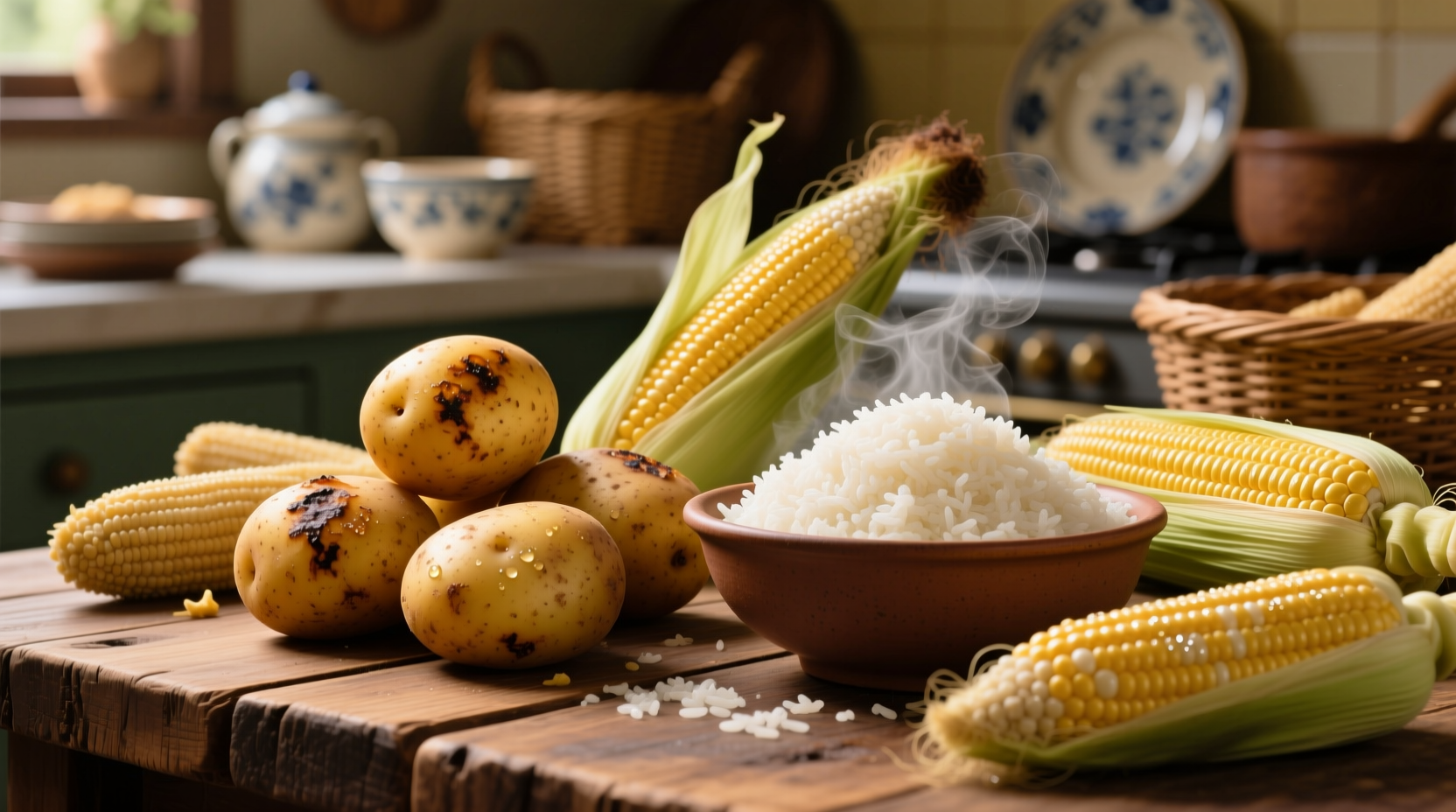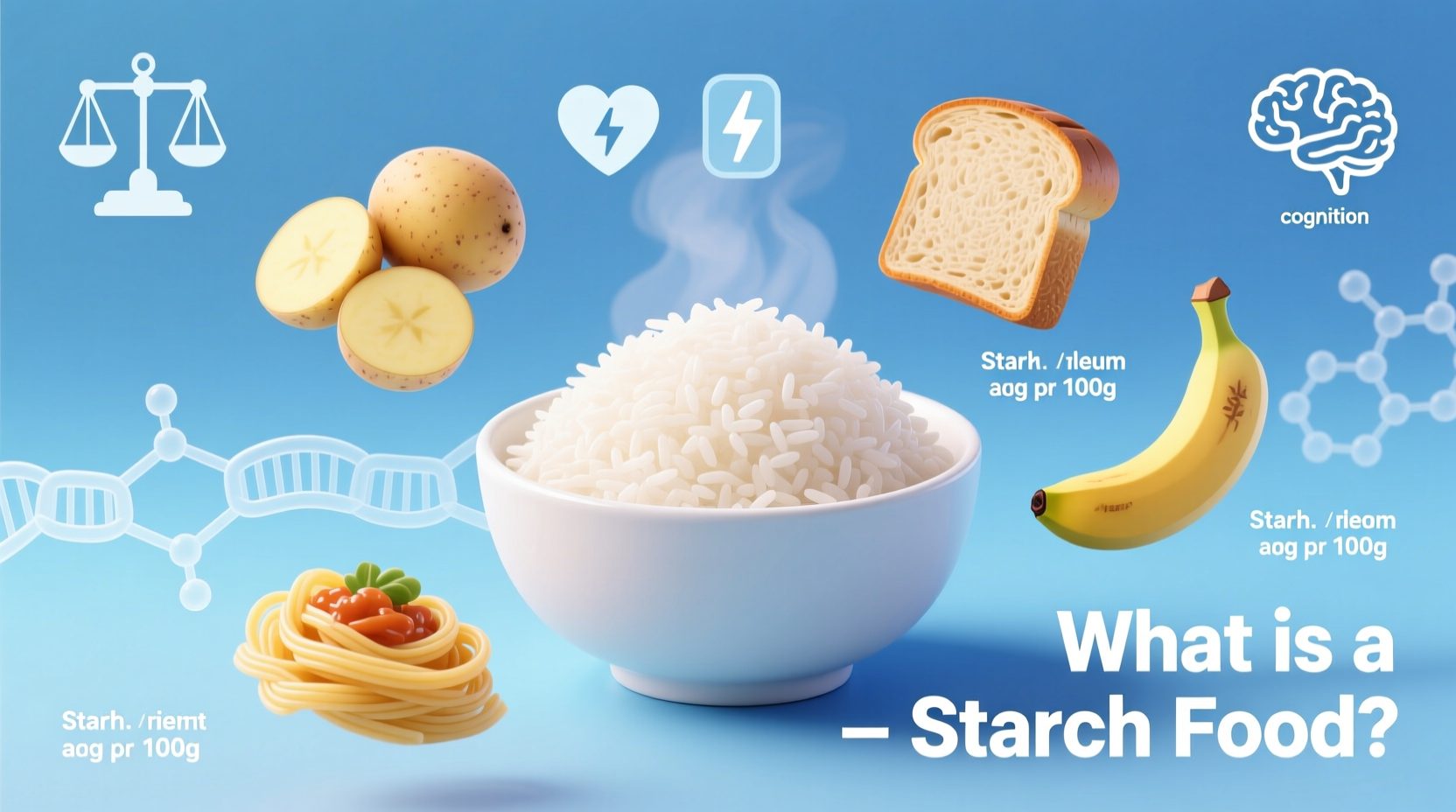Understanding Starch: The Essential Energy Source
When you search what is a starch food, you're looking for clear, science-based information about these fundamental components of our diet. Starch represents nature's way of storing energy in plants, forming long chains of glucose molecules that break down during digestion to fuel your body.
Unlike simple sugars that deliver quick energy spikes, starch provides sustained fuel release. This complex carbohydrate structure makes starch foods valuable for maintaining steady blood sugar levels and supporting long-lasting energy throughout your day.
How Starch Works in Your Body
Your digestive system breaks down starch through a process starting in your mouth with salivary amylase enzymes. This continues in your small intestine where pancreatic amylase further breaks starch into maltose, which then converts to glucose for absorption.
Understanding what is a starch food requires recognizing how these foods differ from other carbohydrates. While sugars contain one or two sugar molecules, starch consists of hundreds to thousands of glucose units linked together. This structural difference significantly impacts how your body processes and uses these energy sources.

Common Starchy Foods You Should Know
Identifying starch foods in your diet helps you make informed nutritional choices. The following table shows common starchy foods categorized by type:
| Food Category | Common Examples | Starch Content (per 100g) |
|---|---|---|
| Grains | Rice, wheat, oats, corn | 70-80g |
| Root Vegetables | Potatoes, sweet potatoes, yams | 15-25g |
| Legumes | Beans, lentils, chickpeas | 20-40g |
| Processed Foods | Bread, pasta, crackers | 50-75g |
Nutritional Value of Starchy Foods
Starch foods provide more than just carbohydrates. Whole grain and unprocessed starchy options deliver significant nutritional benefits:
- Fiber content: Whole grains and legumes provide both soluble and insoluble fiber
- Vitamins: B vitamins, especially thiamine, niacin, and folate
- Minerals: Iron, magnesium, and selenium
- Protein: Legumes and whole grains contain valuable plant-based protein
According to the Dietary Guidelines for Americans 2020-2025, starchy foods should constitute about 45-65% of your daily calories, with an emphasis on whole grains making up at least half of your grain consumption.
Starch Evolution: From Ancient Staple to Modern Nutrition
Understanding what is a starch food requires examining its historical significance. Starch consumption has evolved dramatically throughout human history:
- 10,000 BCE: Early humans began cultivating starchy plants like wheat and barley
- 8,000 BCE: Potatoes domesticated in South America
- 1500s: Global spread of maize (corn) from the Americas
- 19th century: Scientific identification of starch as a distinct carbohydrate
- 20th century: Development of refined grain products
- 21st century: Renewed focus on whole grain starches for health benefits
This timeline shows how starch foods transitioned from basic survival staples to scientifically understood nutritional components. The USDA National Agricultural Library documents how traditional preparation methods like soaking and fermenting improved starch digestibility and nutrient availability in ancient cultures.
Practical Guidance for Healthy Starch Consumption
When incorporating starch foods into your diet, consider these evidence-based recommendations:
Choose Whole Over Refined
Whole grain starches retain their bran and germ, providing significantly more nutrients than refined versions. Research from the Harvard T.H. Chan School of Public Health shows that replacing refined grains with whole grains reduces risk of type 2 diabetes and heart disease.
Consider Cooking Methods
How you prepare starch foods affects their nutritional impact:
- Cooling cooked potatoes or rice increases resistant starch content
- Steaming preserves more nutrients than boiling
- Pairing starches with protein and healthy fats slows glucose absorption
Portion Awareness
While starch foods provide essential energy, mindful portioning supports balanced nutrition. A standard serving of cooked starch equals approximately 15 grams of carbohydrates, or about:
- ½ cup cooked rice or pasta
- 1 small potato (about 3 inches diameter)
- 1 slice bread
- ½ cup cooked beans or lentils
Addressing Common Starch Misconceptions
Several myths persist about starch foods that deserve clarification based on current nutritional science:
Myth: All starches cause weight gain
Fact: Starch foods themselves don't cause weight gain; portion sizes and overall calorie balance determine weight effects. Whole grain starches actually support weight management through their fiber content.
Myth: Starch foods are nutritionally empty
Fact: Whole grain and unprocessed starch foods provide substantial vitamins, minerals, and fiber. The National Institutes of Health confirms that properly prepared starch foods contribute significantly to daily nutrient requirements.
Myth: You should eliminate starches for optimal health
Fact: Humans have evolved to digest starch efficiently. Complete elimination can lead to nutrient deficiencies and reduced energy levels, particularly for active individuals.
Making Informed Choices About Starch Foods
Understanding what is a starch food empowers you to make better dietary decisions. Focus on incorporating diverse, minimally processed starch options while maintaining appropriate portions for your activity level and health goals.
Remember that starch foods form the foundation of many traditional diets worldwide, from the rice-based meals of Asia to the potato-centric cuisines of South America. These cultural dietary patterns demonstrate how starch foods can support health and longevity when consumed as part of balanced eating patterns.











 浙公网安备
33010002000092号
浙公网安备
33010002000092号 浙B2-20120091-4
浙B2-20120091-4